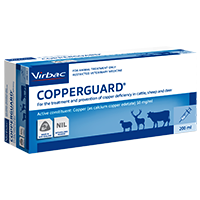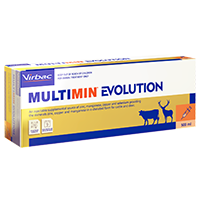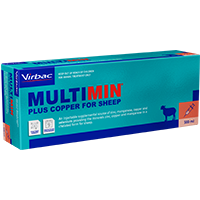.jpg)
Copper Deficiencies in Cattle: Symptoms, Prevention and Treatment
Copper (Cu) is an essential trace element vital for numerous physiological functions in cattle, including bone development, immune system support, and iron transport for red blood cell maturation. Maintaining adequate copper levels in your herd is crucial for overall health and productivity. Unmanaged copper deficiency can lead to a range of clinical symptoms in cows and calves.
Why does copper deficiency occur in cattle?
Copper deficiency can manifest in two ways.
Primary Deficiency: This occurs when the dietary intake of copper is simply too low.
Secondary Deficiency: This is more complex, resulting from the presence of other substances that interfere with the absorption and utilisation of available copper in feed. Common culprits include molybdenum, iron, and sulphur. Zinc, often supplemented at high concentrations during the facial eczema season, can also disrupt copper absorption.
Recognising the symptoms of cooper deficiency in your herd
While severe clinical deficiencies are less common with modern farming practices, subclinical copper deficiencies are frequently identified. It's important to be aware of the signs. Copper deficiency is most prevalent in young stock, and diary cows during winter and early spring, a period of increased demand due to pregnancy and early lactation.
Symptoms in cows:
- Changes in coat colour (e.g., dull, faded, or reddish tinge in black cattle)
- Reduced milk yields
- Reproductive issues (e.g., reduced fertility, delayed estrus)
- Weight loss
Symptoms in calves:
- Fast-growing calves over six months of age are particularly susceptible
- Poor growth rates
- Scouring (diarrhoea)
- Coat colour changes
- Immune suppression
Less common but serious signs can include anaemia, falling disease (sudden death due to heart failure) and skeletal defects.
Preventing and treating cooper deficiencies in your herd
Addressing cooper deficiency is straightforward once identified. If you suspect your herd's copper status is compromised, the first step is to test their copper levels. The most accurate method for assessing copper reserves is a liver biopsy. This will determine if their current diet provides adequate copper or if supplementation is necessary.
Your veterinarian can help you choose the best treatment approach, as multiple products are available for copper supplementation.
Copper supplementation options for cattle
Copper injections, offer a convenient way to supplement your herd. Based on liver biopsy results, your vet will recommend the correct dosage. There are two primary types of copper injections, differing in their active ingredients:
Cooper Glycinate: These injections typically take longer for copper to be transferred to the liver (up to 21 days). They are also more commonly associated with tissue reactivity and potential injection site reactions.
Calcium Copper Edetate: This form is more rapidly absorbed, with copper reaching the liver within 7 days and stored for future use. For more information on Virbac’s calcium copper edetate injection, click here.
Cooper bullets, are capsules containing copper wire particles. Once ingested, they lodge in the abomasum, slowly releasing copper over 4-6 months, offering a relatively safe and sustainable release. A potential drawback is that they can be challenging to administer, especially to larger adult cows.
Conclusion
Understanding the signs of copper deficiency and the available prevention and treatment strategies is crucial for minimising risks on your farm. By implementing appropriate management plans, you can ensure your herd maintains optimal copper levels for health and productivity. If you have questions about the best supplementation option for your herd or need further advice, we highly recommend contacting your veterinarian to develop a tailored plan.




